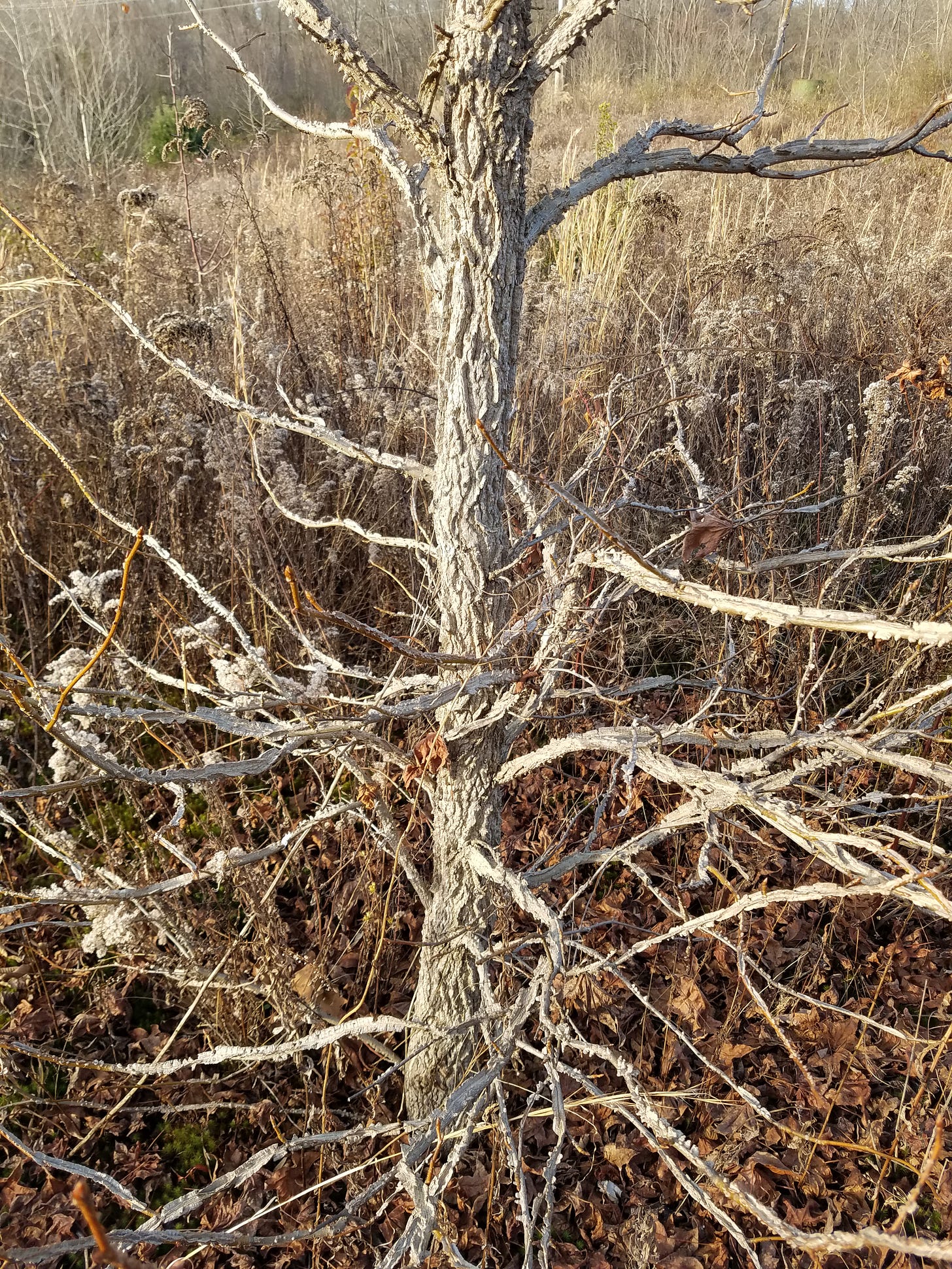Lessons from abandoned land
Revisiting the Savanna
Before discovering Substack this past March, I blogged (unsuccessfully) on another platform for over two years. Consequently I have a rich archive of barely-seen articles that I can dust off and bring out into the daylight. I often refer to the Savanna in my writing, without expanding on what is meant by the term. If you're curious, here is the explanation from one year ago:
Essentially a dead piece of land after decades of being used to grow corn, the site now known as the Savanna has exploded with pioneer species. It simultaneously creates new habitat for a multitude of plant, animal, and fungal species, and acts as a salve against eco-anxiety in humans. Unsurprisingly, daily walks to observe the miraculous progress of young plants as they regenerate a former wasteland is a balm to the incessant doom and gloom beamed at us from the Climate-Industrial Complex.
For readers unfamiliar with the geography of the region, I should explain that Appalachian Ohio, according to our Wikipedia entry, consists of “a network of rocky hollows and hills going in all directions.” The land was deforested, strip mined for coal, and used for farming, but much of it was eventually abandoned in favor of flatter, more easily exploitable lands to the west. Some of the land was purchased from willing sellers by the federal government to establish the Wayne National Forest.
Eventually native vegetation, perhaps from seed sources in the steepest, most inaccessible hollows, began to make a comeback, with help from active reforestation projects in the Wayne. The result was that by the time the cornfield was left to revert, plenty of seeds from native plants were available to jumpstart the process. A not inconsequential vector is the river, which regularly deposits seeds in the floodplain, and the mud in which they easily take root.
These conditions have meant that, as explained in the linked post, I've done very little work to transition the plot from barren to bountiful. The trajectory of growth on the Savanna has followed the saying, “sleep, creep, leap,” usually employed to describe the growth habit of ornamental plants in their first three growing seasons. In the case of the Savanna, the “sleep” phase lasted multiple years as the land recovered from chronic chemicalization and compaction. Eventually local weeds like goldenrod, broom sedge, wild blackberry, and Queen Anne's succeeded in creeping across the entire expanse. I believe we are now entering the leap phase because the vegetation seems shockingly taller this year, and there are suddenly thick pawpaw stands scattered throughout.
If you're anxiously observing your own rewilding patch, be patient, and understand that change does not proceed at a uniform pace. As pioneer species move in, life creates the conditions for life at an accelerating tempo. Nature rushes to cover herself, with weedy species pumping out roots and shoots that break up soil, conserve moisture, and die quickly to add organic matter. Young trees shoot up at an astonishing rate, only to slow down once they're above the level of shrubs and herbaceous perennials and guaranteed first dibs on sunlight. Eventually the most exciting, observable changes will slow as trees settle in and get down to the business of increasing in girth and making shade. Another phase begins, necessitating an additional word in our descriptive phrase—perhaps “deep,” indicating that the relative height of the vegetative skin of the earth is increasing.
In the Savanna there are large patches of sericea, Japanese honeysuckle covers entire sections, and maidengrass erupts here and there. We also have callery pears, autumn olive, and bush honeysuckle, but I'm not stressing over it. For anyone interested in discussing land restoration, the subject of non-native invasives is unavoidable, as are the controversies over herbicide use. I've made my thoughts clear previously and don't get into debates because it is pointless to do so. I don't use biocides, but recognize that there is a large and vocal subset of land restorers that believes herbicides to be both necessary and relatively harmless. It seems to me that the power conferred by use of such substances is intoxicating and they simply don't want to give this up. It's an old story.
I'm grateful to have the chance to steward a piece of land toward a more productive state. You may have a suburban yard or only a hell strip to work with. Or perhaps you have decided to remove invasive, strangling vines from trees in a park you frequently visit, or guerrilla garden in an empty lot. Your success may look nothing like mine. The biggest lesson is, again, do what you can with what you have, right now.









The mossy corner is divine! And I have been so impressed with your pawpaw patch, too. Letting the land breathe and come to life, that seems like such a wonderful thing to get to experience.